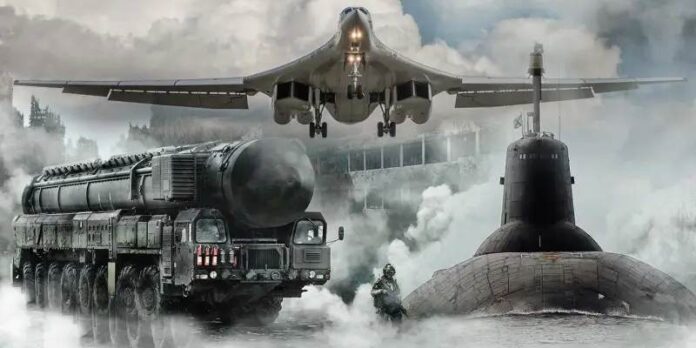With technological advancement, warfare has evolved, and no human on earth is safe from the destructive potential of modern weapons.
Wars were traditionally fought on battlefields until the 17th century. There were minimal civilian casualties, infrastructure remained largely intact, and overall, the war was relatively bloodless. However, circumstances have since changed. Technology has advanced to its most lethal forms, and warfare has evolved dramatically.
The deadliest demonstration of this evolution occurred during World War II, when the United States detonated atomic bombs over the Japanese cities of Hiroshima and Nagasaki. These bombings killed over 140,000 people, most of them civilians. In a nuclear war, no organization, hospital, or institution can offer assistance, as everything is destroyed. Beyond the immediate civilian death toll, nuclear war has long-term consequences for the climate, human reproduction, and physical health. With today’s advanced technology, entire countries could be wiped off the map at the push of a button.
Hybrid warfare, another modern method of conflict between states, involves the use of missiles, drones, cross-border shelling, weapons, and misinformation campaigns to gain superiority. This was evident in the Indo-Pak war of 2025, where civilian casualties outnumbered military ones on both sides. Infrastructure was devastated, homes were demolished, and markets were reduced to rubble.
Narrative warfare was evident during the Pakistan-India conflict. Indian media actively shaped public perception by spreading misinformation, which contributed to a negative global image of India and increased pressure on its defense forces. In contrast, Pakistan utilized both mainstream and social media to counter these false narratives. Pakistani platforms, along with youth participation, played a key role in debunking misinformation and projecting a positive and accurate image of the nation. However, the spread of false information during such conflicts can have serious consequences. Misinformation and misconceptions create chaos, fear, and confusion among civilians living in war zones. This environment can lead to heightened anxiety and mental health challenges for both the people residing in these areas and those fighting on the front lines.
Similarly, the Israel-Palestine conflict has claimed the lives of more than 50,000 Palestinians in the past 18 months. Infrastructure in Palestine has been completely destroyed. There is no access to food or clean water; children are suffering from various diseases without a functioning healthcare system; and education has come to a halt. At least 111,000 people have been injured in Gaza as a result of the war, that’s one in every 20 people. According to the World Health Organization, nearly a quarter of the injured, an estimated 22,500, have life-altering injuries that require rehabilitation but are not receiving rehabilitation. Severe limb injuries are among the most common.
These wars also displace people, leading to widespread refugee crises. The Ukraine conflict, Soviet intervention in Afghanistan, the Syrian Civil War, and the Sudanese Civil War are all examples of how decisions made by ruling bodies escalate into major conflicts, impacting millions of innocent lives.
People who wish for small conflicts to grow into full-fledged wars must abandon this mindset. The aftermath and ongoing consequences of war today are devastating, far removed from the limited impact seen in earlier centuries. With current technology, one command can erase entire nations and irreversibly harm the global climate.
The mindset that promotes war must be challenged from an early age. Children should not be taught to view other nations’ sovereignty as a threat to their own. Instead, they must be educated in the values of coexistence and peace. After all, today’s children are tomorrow’s leaders. If they inherit jingoistic beliefs, the world risks spiraling into further destruction.




